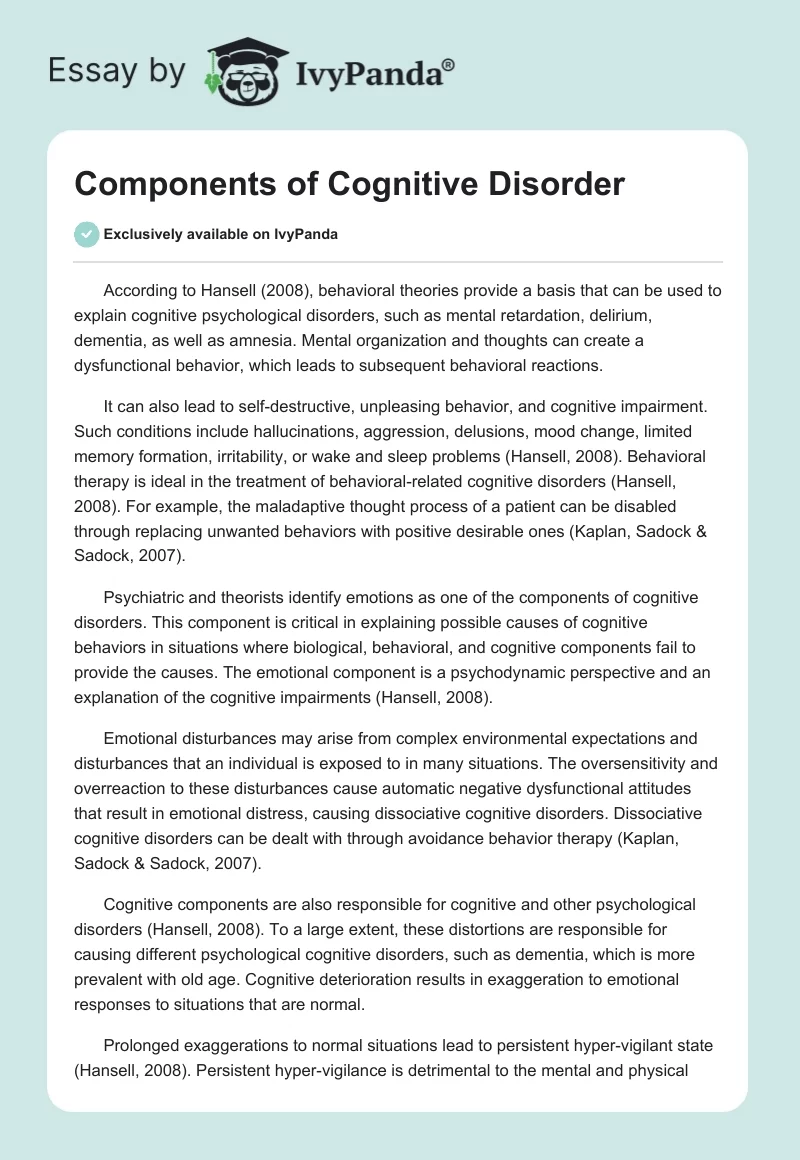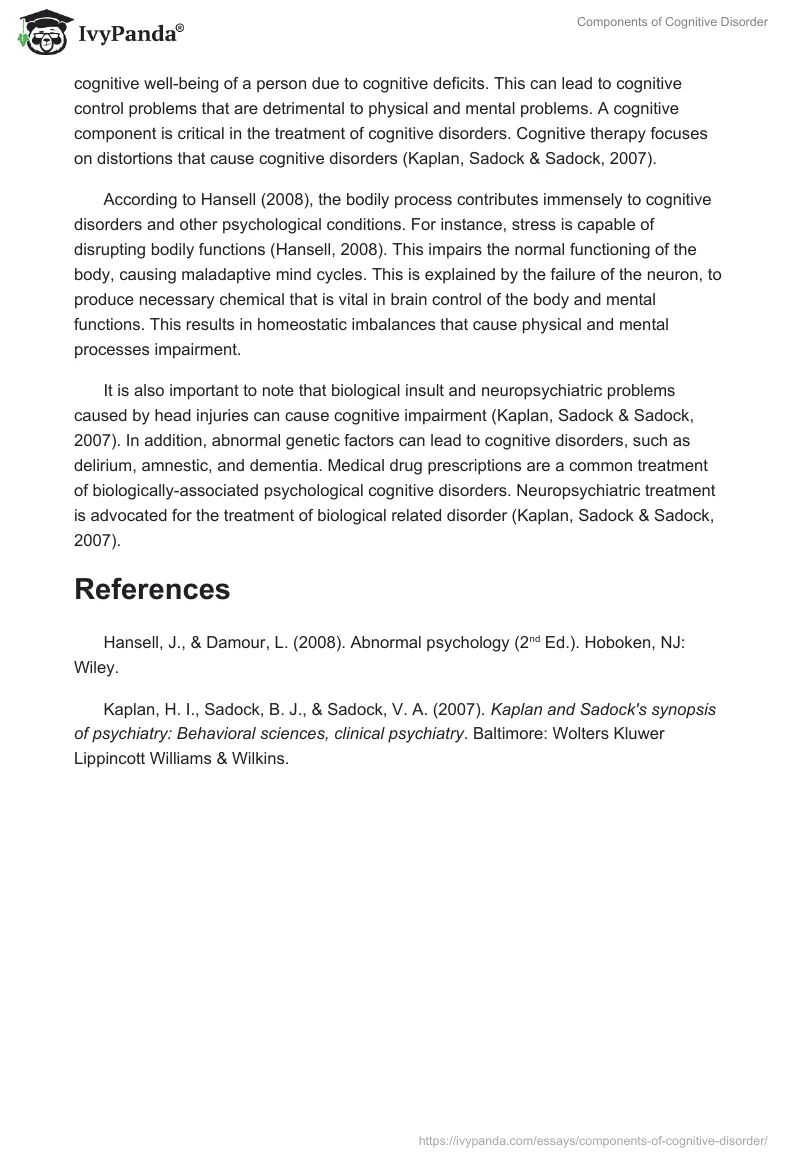According to Hansell (2008), behavioral theories provide a basis that can be used to explain cognitive psychological disorders, such as mental retardation, delirium, dementia, as well as amnesia. Mental organization and thoughts can create a dysfunctional behavior, which leads to subsequent behavioral reactions.
It can also lead to self-destructive, unpleasing behavior, and cognitive impairment. Such conditions include hallucinations, aggression, delusions, mood change, limited memory formation, irritability, or wake and sleep problems (Hansell, 2008). Behavioral therapy is ideal in the treatment of behavioral-related cognitive disorders (Hansell, 2008). For example, the maladaptive thought process of a patient can be disabled through replacing unwanted behaviors with positive desirable ones (Kaplan, Sadock & Sadock, 2007).
Psychiatric and theorists identify emotions as one of the components of cognitive disorders. This component is critical in explaining possible causes of cognitive behaviors in situations where biological, behavioral, and cognitive components fail to provide the causes. The emotional component is a psychodynamic perspective and an explanation of the cognitive impairments (Hansell, 2008).
Emotional disturbances may arise from complex environmental expectations and disturbances that an individual is exposed to in many situations. The oversensitivity and overreaction to these disturbances cause automatic negative dysfunctional attitudes that result in emotional distress, causing dissociative cognitive disorders. Dissociative cognitive disorders can be dealt with through avoidance behavior therapy (Kaplan, Sadock & Sadock, 2007).
Cognitive components are also responsible for cognitive and other psychological disorders (Hansell, 2008). To a large extent, these distortions are responsible for causing different psychological cognitive disorders, such as dementia, which is more prevalent with old age. Cognitive deterioration results in exaggeration to emotional responses to situations that are normal.
Prolonged exaggerations to normal situations lead to persistent hyper-vigilant state (Hansell, 2008). Persistent hyper-vigilance is detrimental to the mental and physical cognitive well-being of a person due to cognitive deficits. This can lead to cognitive control problems that are detrimental to physical and mental problems. A cognitive component is critical in the treatment of cognitive disorders. Cognitive therapy focuses on distortions that cause cognitive disorders (Kaplan, Sadock & Sadock, 2007).
According to Hansell (2008), the bodily process contributes immensely to cognitive disorders and other psychological conditions. For instance, stress is capable of disrupting bodily functions (Hansell, 2008). This impairs the normal functioning of the body, causing maladaptive mind cycles. This is explained by the failure of the neuron, to produce necessary chemical that is vital in brain control of the body and mental functions. This results in homeostatic imbalances that cause physical and mental processes impairment.
It is also important to note that biological insult and neuropsychiatric problems caused by head injuries can cause cognitive impairment (Kaplan, Sadock & Sadock, 2007). In addition, abnormal genetic factors can lead to cognitive disorders, such as delirium, amnestic, and dementia. Medical drug prescriptions are a common treatment of biologically-associated psychological cognitive disorders. Neuropsychiatric treatment is advocated for the treatment of biological related disorder (Kaplan, Sadock & Sadock, 2007).
References
Hansell, J., & Damour, L. (2008). Abnormal psychology (2nd Ed.). Hoboken, NJ: Wiley.
Kaplan, H. I., Sadock, B. J., & Sadock, V. A. (2007). Kaplan and Sadock’s synopsis of psychiatry: Behavioral sciences, clinical psychiatry. Baltimore: Wolters Kluwer Lippincott Williams & Wilkins.


